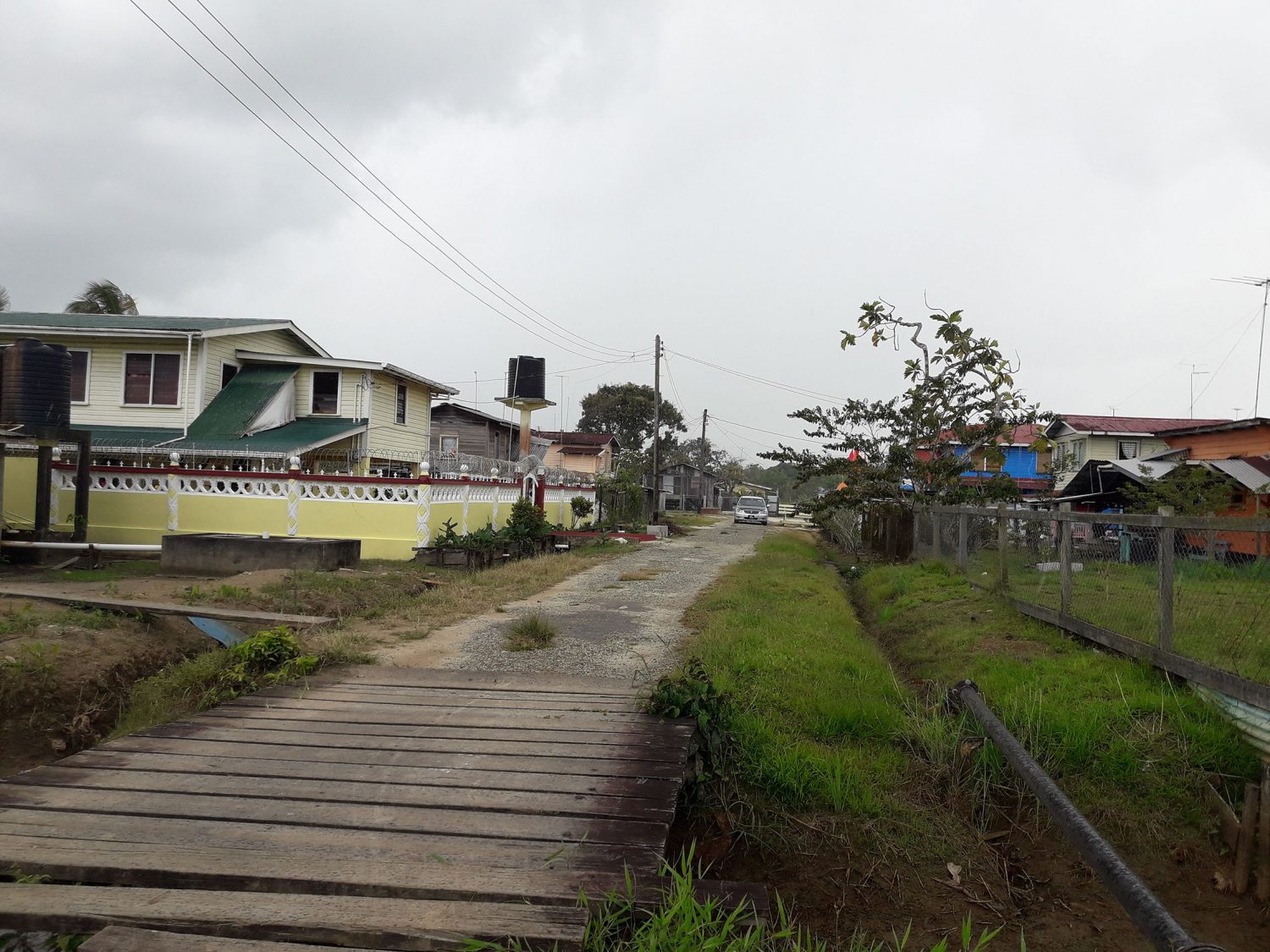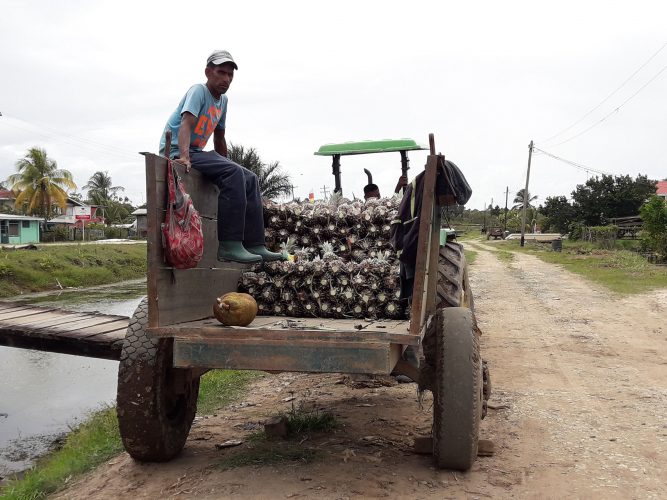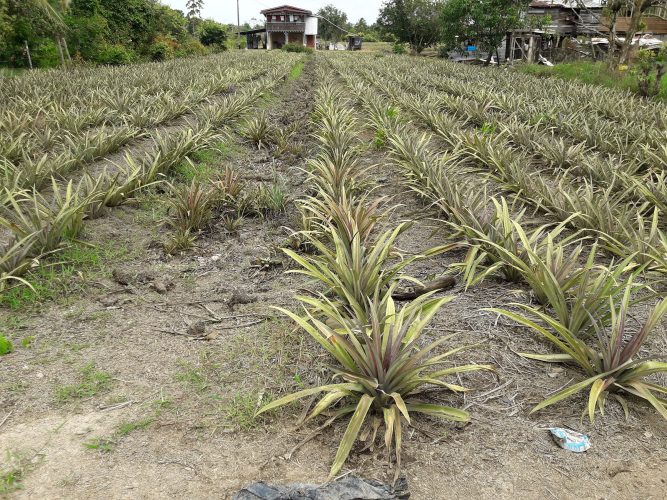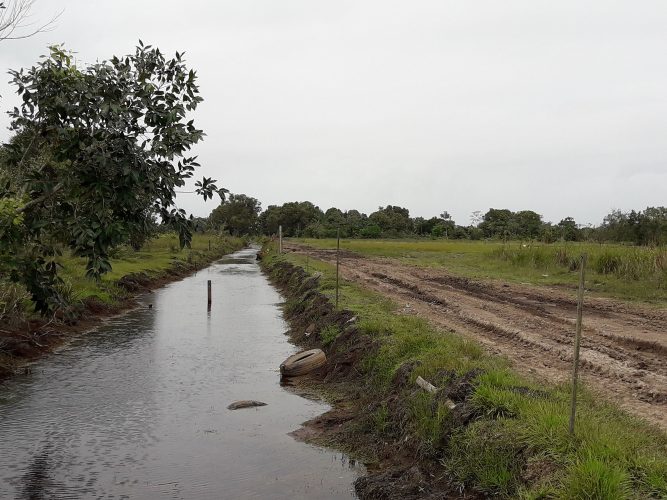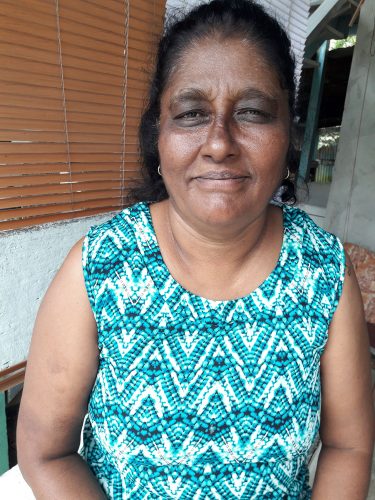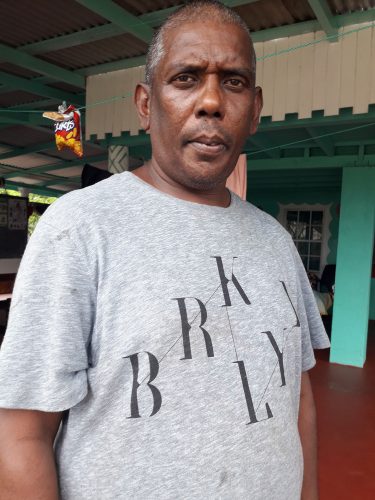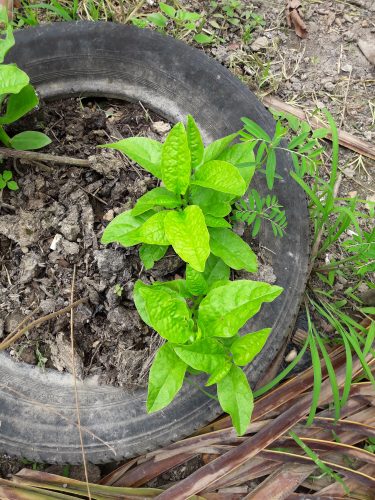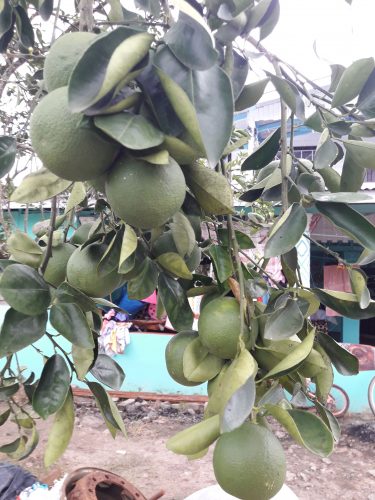Photos by Joanna Dhanraj
Good Land is situated in Canal Number One, about seven and a half miles from the junction with Bagotville. The village, which is bordered by the conservancy dam and another village called Soesdyke, is home to more than 100 residents. The village is believed to have existed since the 1700s, while the canal was said to have been dug by slaves.
While Okoo is the common name everyone uses for the village, it is not the official name. Three persons agreed that the actual name of the village was Good Land, while another showed a bill that said Good Hope, the same name as another village across the canal. However, the signboard at the head of the village read North Section.
Usually, persons travelling to Canal Number One would get a car at the Vreed-en-Hoop junction, but to get to this section one has to take a car at the Bagotville junction.
Okoo is basically a farming area. Most of the villagers spend their days in the backdam planting and harvesting. The village is prone to flooding twice a year during the rainy season and on the day I visited, threatening black clouds hung overhead.
Along the roads in the area, there are blue/green cement bricks packed into potholes and persons later explained that this was done through self-help by the villagers, a common activity here.
Lalita Ramatar was at her in-law’ residence, where she helps out with keeping their tiny shop.
She moved to the village 13 years ago after getting married. “[Since then] I’ve found the people to be good and friendly. When I moved here, the roads in the village were mud dams… they [the authorities] eventually came and put in the crusher run road,” she said.
She added that she came from another village in the Canal called Sans Souci and she has had to adjust to the flooding. Hardly anyone escapes the flooding, which she says they would not have had to worry about had the drains and canal been clean when the rains came. Almost every house has a bottom flat and persons are usually forced to move to the upper flat.
Though the land is fertile, the woman noted, people are discouraged from planting because of the flooding. So, instead of having kitchen gardens, persons prefer to plant in the backdam. While it also floods there, it is believed to have a better drainage system than the village.
“Parts of the backdam flood; it depends on whether the main canal is cleaned. If it is cleaned, we won’t get floods but when it isn’t, the flood waters cannot run off,” she said.
Returning to how cooperative the people of Okoo are, Ramatar said that they do whatever they can to make life easier for each other, pointing out the filling up of the potholes. Although Okoo goes as far as the
conservancy dam, the people still have all amenities. They are provided with internet and cable by Atlantic Wireless.
Mobile shops move along the road selling groceries while persons traverse the village almost every day, selling meat and fish and greens.
Ramatar asks two things for Okoo: for the roads to be fixed and for a habitual cleaning of the canals and drains.
Duryodhan Patrick’s yard has a laden orange tree. Now 49 years old, Patrick was born and bred in Okoo. He attended the McGillivray Primary School situated a few villages before Okoo, along with his three brothers and sister; the children of Okoo and neighbouring villages attend the same school. He remembers heading to the backdam after school hours with his parents and siblings. They planted pineapple, cassava and plantain at the time. He said that because of poverty, he left school at the age of 14 and headed to “the gold bush”. He worked in that sector for a number of years.
Patrick said that Okoo which today has a large percentage of Indian Guyanese and two Amerindian families, was once mostly populated by African Guyanese up to the 1960s. However, many of them sold their land and moved to other parts of Guyana, some along the Linden/Soesdyke Highway, as well as overseas.
Patrick, a carpenter, said that although a good percentage of the workforce are farmers, the younger generation having been afforded the opportunity to further their studies have gone on to work in schools, hospitals and other government jobs; his daughter is a teacher. Another percentage of the workforce is self-employed.
An advantage of growing up here, he said, is growing in a place that has a quiet nature, where the people are easy-going and hardworking.
He went on to say how disgusted he was by the floods, noting that the minute it rains for a lengthy period, there’s flooding to be expected unless the drains and canal are kept clean. He shared that he and his family were forced to move upstairs when the floods came. When the village was hit hard with the December rains, Patrick managed to escape, but it came at a cost of 11 truckloads of sand to raise his downstairs while most of the village felt the brunt of this disaster.
Apart from wanting better roads for his village, he wishes for the ballfield they have been after for so long. “Years ago, a few persons had donated their lots for the purpose of a ballfield, but they began taking back their land. I’m not sure the government full up private land, but I wish they would do something to help us, specifically the youths who would have to play cricket and football on the road. If the government can maybe buy the land for us or somehow get the persons to keep the agreement they had with us of using the land for the ballfield, then we would work along with them into helping to fix up the ground,” Patrick said.
I sat comfortably on a bench awaiting Nirmala Gobardhan’s return, she had insisted that I wait while she headed over to one of her neighbours for a chicken. Looking around, I noticed plant sprouts, new calaloo growing in tyres, shaded by dried sticks attached together and coconut branches. When she returned, Gobardhan explained that she took a while because the person who usually plucks the chicken was not there, so she helped to pluck it herself.
Gobardhan moved to Okoo with her family 25 years ago; she hails from Rose Hall, Berbice. She learnt of the village through her sister who was already living here. Most of the time, she and her husband are busying farming in the backdam and in their yard. “We had a lot of pineapples in the backdam and cash crops in the yard but due to the December rain, a large portion was destroyed,” she related.
“We usually get floods two times a year, May/June and in December. It is frustrating that we work so hard then lose our crops. Sometimes if they keep the canals and drains clean, there won’t be flooding. We had officials visit us during the Christmas time, Minister [Joe] Harmon and Minister [Khemraj] Ramjattan. Since most of the people here are farmers and lost a lot during the December rain, they brought us food hampers. They promise to upkeep the canal and drains so that we won’t get floods.”
Yet with all the flooding, Gobardhan is not discouraged; she likes living in Okoo because of the fresh produce they can afford themselves through farming, noting that it is not like Georgetown where vegetables need to be purchased or where one has to run to the shop for dry coconuts.
She likes how friendly and cooperative the people are.
Since there are no places of worship in the village, she attends the Good Hope Baptist Church across the canal.
She added that Okoo is relatively quiet until Saturday nights when the rum shop across the canal gets busy and blasts music.
She wishes that the youths in her community can be afforded jobs. Her son, for instance, wrote his Caribbean Secondary Education Certificate examination last year and although he has since applied to various organisations for a job, he is still without one. However, to keep busy, he helps out his father in the backdam.
